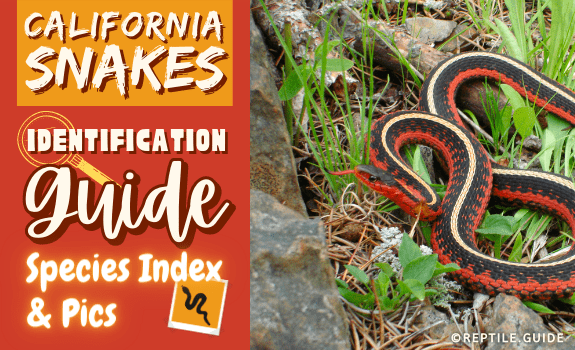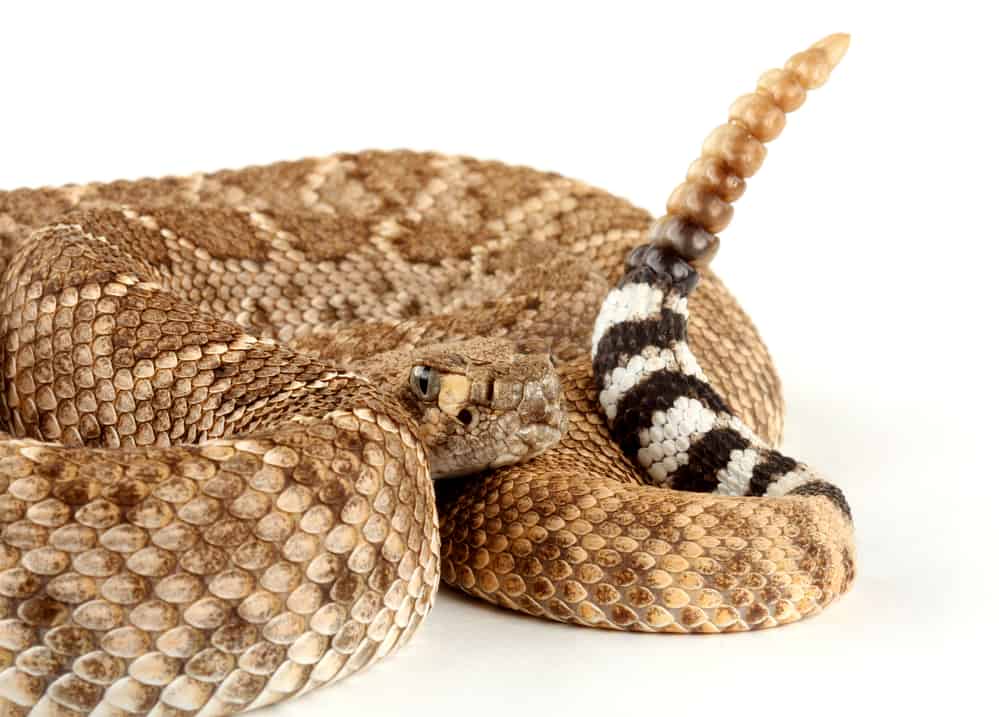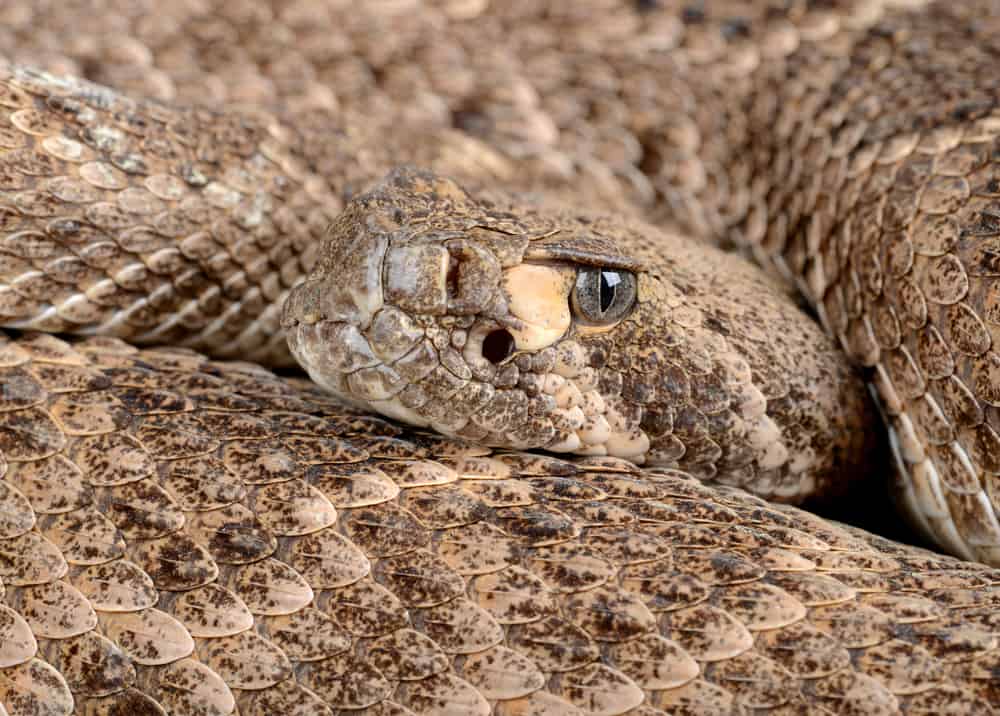California snakes range in form from yellow snakes to drab gray or brown species.
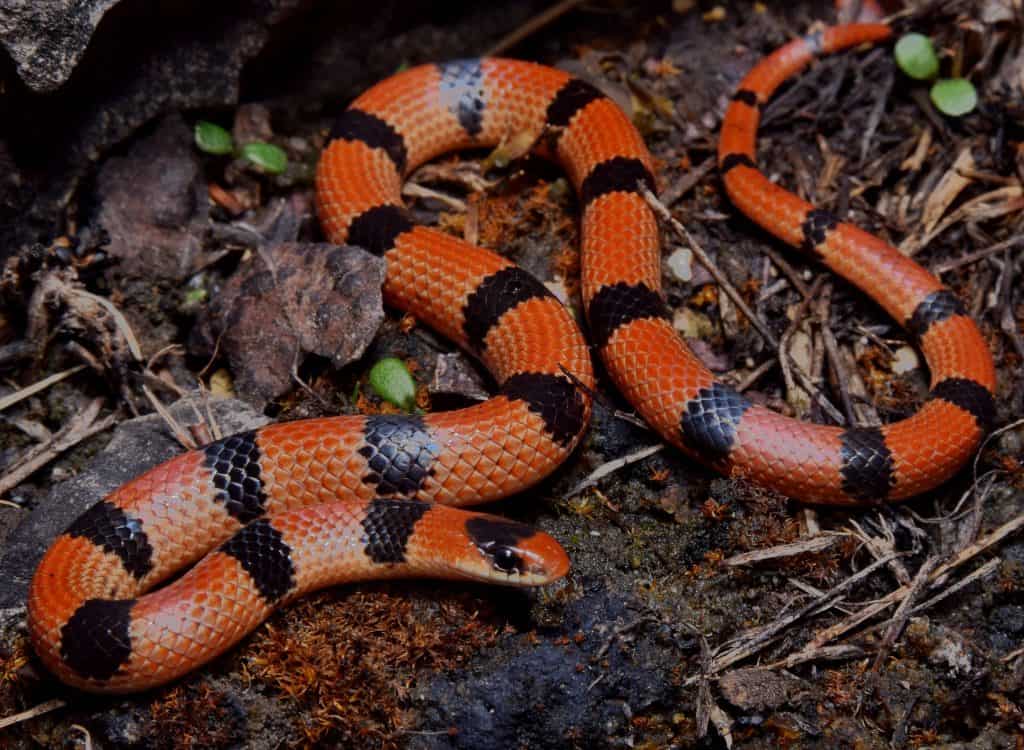
Image credit: smashtonlee05 (via CreativeCommons.org)
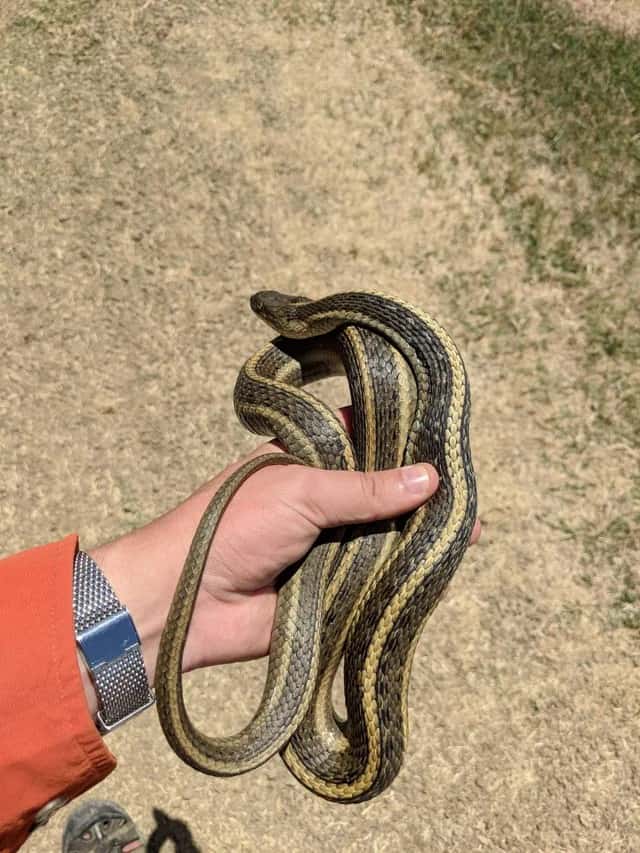
Image credit: u/Lego_C3PO (via Reddit.com)
Some of them are venomous and others are harmless. They range from the useful gopher snakes which control rodent populations to the rattlesnakes with their distinctive rattling sound.
In this article, we’ll take a closer look at:
- The most common species in the area
- How to react when you discover a snake
- How to identify the venomous snakes in the area
- The basics of identifying California herps (snakes and reptiles)
We’ll also share a set of useful resources at the end of the article. Let’s get into it.
In This Article
Snake Identification Basics
Whether you’re identifying California snakes, lizards, or frogs there are a few major criteria that can help you find out what you’ve seen.
Below, we’ll discuss each of these identification tools, and the process for identifying these animals.
Length
Length is one of the most defining characteristics when you’re identifying snakes. Most species average at a certain length.
A California kingsnake doesn’t reach lengths anywhere near that of the red racer.
Even before you’ve looked at a snake’s coloration, you could determine that a six-foot-long snake isn’t a California Kingsnake.
Likewise, an eight-inch-long snake is unlikely to be a long species like the Coachwhip.
Locality and Habitat Type
The locality is another essential identification characteristic. Not all Southern California snakes have ranges that extend to the North.
Likewise, not all Northern California snakes have ranges that cover Central California.
Therefore, the snakes in the San Francisco Bay area may be different from those found in the Redwood National Park in Northern California.

You also need to take note of the habitat type. A water snake won’t live in a dry, sandy area, and a snake that likes sandy regions won’t live in damp leaf litter.
Most good field guides have range maps and photo indexes for the different species.
Head and Pupil Shape
The head and pupil shape of a snake can play a significant role in identifying it. Common species like the California kingsnake often have round pupils.
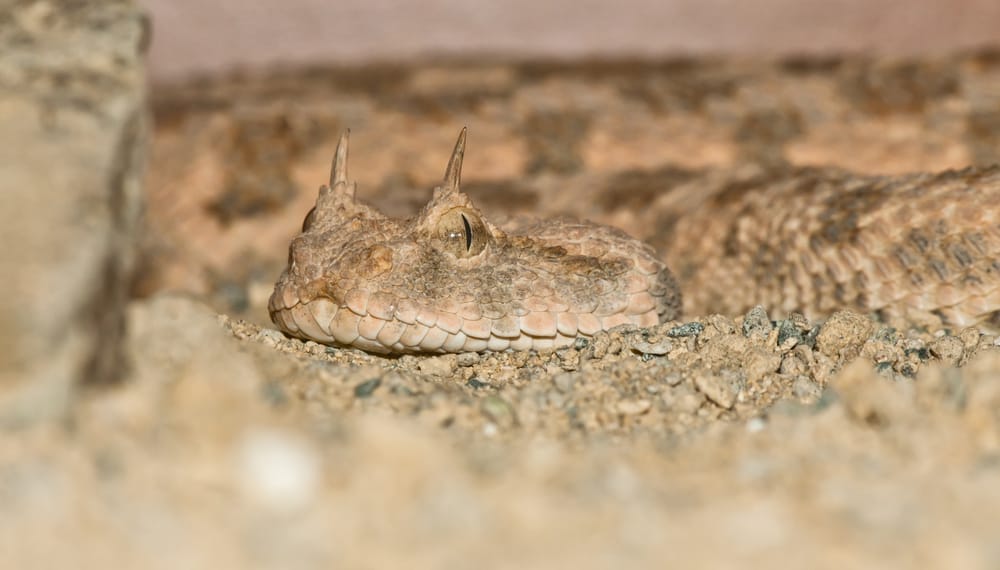
Pit vipers, on the other hand, usually have slit-shaped pupils. Some other snakes have a similar pupil shape, which becomes a distinguishing characteristic.
Different groups of snakes also have different head shapes. The rattlesnakes have broad, robust heads, while species like the California garter snake have longer, narrower heads.
Other snakes like the California kingsnake, have rounder, almost bullet-shaped heads.
Color and Patterning
Coloration and patterning can vary significantly, even within a single species.
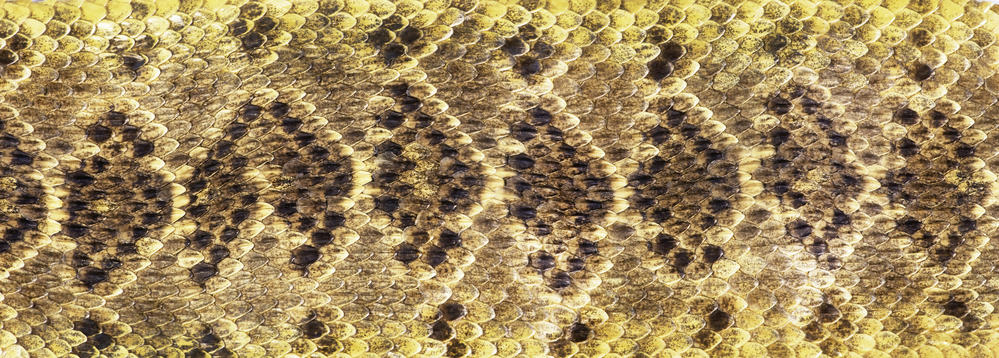
For example, if you’re looking up black snakes in California it could be a naturally black species, a melanistic individual, or just a darker-than-usual brown snake.
However, the snake’s color is still a useful characteristic. Snakes that are usually black or brown won’t suddenly spout a bright red animal.
Nor will uniformly green snakes suddenly produce animals with large brown patterns.
Alone, none of the identifying characteristics is conclusive. However, if you combine all your observations, it will quickly lead you to accurate identification.
Quickly Identifying Venomous Species
While the reptiles of California include a fair amount of venomous snakes, it’s pretty easy to spot the ones that you’ll find here.
Below we’ll take a look at the telltale signs that you’ve found a venomous snake.
Most of the Venomous Snakes in California are Vipers
Only three of the venomous snakes found in California aren’t rattlesnakes. All of the other dangerous species are rattlers.
Fortunately, it’s fairly easy to tell these snakes apart from other species, and few snakes can be mistaken for a rattlesnake.
You can look for the following signs if you think you’ve found a rattlesnake:
- The tail has adapted to form a rattle.
- Even if the snake is long, its body is thick and robust.
The rattlesnakes are easy to spot, thanks to their distinctive rattle. - The snake has a broad head that’s almost shield-shaped.
- The snake’s pupils are shaped like slits, rather than round.
The slit-shaped pupils and heat pits of the pit vipers are distinctive. - There are heat-sensing pits between the snake’s eyes and nostrils.
- The animal relies on camouflage or a disruptive pattern to keep it hidden, instead of trying to get away.
Identifying Seasnakes and Lyresnakes
The other venomous species in the area are relatively easy to identify as well.
Yellow-bellied sea snakes:
- Only occur along the coast.
- Have violent black and yellow coloration.
- Have adapted to sport a finlike tail which helps them to swim.
Lyre snakes:
- Have slit-shaped eyes.
- Are semi-arboreal (tree-dwelling).
- Rely on camouflage to keep them hidden.
- Have a lyre-shaped pattern on the backs of their heads.
Which Snakes Live in California?
iNaturalist lists 58 species of snake in the California area. Several of those species also have subspecies or regional variants.
The following species are the venomous California snakes:
Rattlesnakes
-
- Panamint Rattlesnake – Crotalus stephensi
- Great Basin Rattlesnake – Crotalus lutosus
- Red Diamond Rattlesnake – Crotalus ruber
- Mohave Desert Sidewinder – Crotalus cerastes cerastes
- Colorado Desert Sidewinder – Crotalus cerastes laterorepens
- Northern Pacific Rattlesnake – Crotalus oreganus
- Southern Pacific Rattlesnake – Crotalus helleri
- Northern Mohave Rattlesnake – Crotalus scutulatus scutulatus
- Southwestern Speckled Rattlesnake – Crotalus mitchellii pyrrhus
- Western Diamond-backed Rattlesnake – Crotalus atrox
Lyresnakes
-
- Sonoran Lyresnake – Trimorphodon lambda
- California Lyresnake – Trimorphodon lyrophanes
Yellow-bellied Seasnake – Hydrophis platurus
Most of the non-venomous species in the region fall into one of the following groups:
Glossy Snakes
-
- Desert Glossy Snake – Arizona elegans eburnata
- Mohave Glossy Snake – Arizona elegans candida
- California Glossy Snake – Arizona elegans occidentalis
Rubber Boas
-
- Northern Rubber Boa – Charina bottae
- Southern Rubber Boa – Charina umbratica
Shovel-nosed Snakes
-
- Mohave Shovel-nosed Snake – Chionactis occipitalis
- Colorado Desert Shovel-nosed Snake – Chionactis annulata annulata
Racers and Coachwhips
-
- Red Racer – Coluber flagellum piceus
- Alameda Striped Racer – Coluber lateralis euryxanthus
- San Joaquin Coachwhip – Coluber flagellum ruddocki
- California Striped Racer – Coluber lateralis lateralis
- Desert Striped Whipsnake – Coluber taeniatus taeniatus
- Baja California Coachwhip – Coluber fuliginosus
- Western Yellow-bellied Racer – Coluber constrictor mormon
Sharp-tailed Snakes
-
- Forest Sharp-tailed Snake – Contia longicauda
- Common Sharp-tailed Snake – Contia tenuis
Ring-necked Snakes
-
- Regal Ring-necked Snake – Diadophis punctatus regalis
- Pacific Ring-necked Snake – Diadophis punctatus amabilis
- Monterey Ring-necked Snake – Diadophis punctatus vandenburgii
- San Diego Ring-necked Snake Diadophis punctatus similis
- Coral-bellied Ring-necked Snake – Diadophis punctatus pulchellus
- Northwestern Ring-necked Snake – Diadophis punctatus occidentalis
- San Bernardino Ring-necked Snake – Diadophis punctatus modestus
Nightsnakes
-
- Desert Nightsnake – Hypsiglena chlorophaea deserticola
- California Nightsnake – Hypsiglena ochrorhyncha nuchalata
- San Diego Nightsnake – Hypsiglena ochrorhyncha klauberi
Kingsnakes
-
- California Kingsnake – Lampropeltis californiae
- Coast Mountain Kingsnake – Lampropeltis multifasciata
- California Mountain Kingsnake – Lampropeltis zonata
Black-headed Snakes
-
- Smith’s Black-headed Snake – Tantilla hobartsmithi
- Western Black-headed Snake – Tantilla planiceps
Gartersnakes
-
- Giant Gartersnake – Thamnophis gigas
- Sierra Gartersnake – Thamnophis couchii
- Aquatic Gartersnake – Thamnophis atratus
- Common Gartersnake – Thamnophis sirtalis
- Two-striped Gartersnake – Thamnophis hammondii
- Northwestern Gartersnake – Thamnophis ordinoides
- Western Terrestrial Gartersnake – Thamnophis elegans
- Marcy’s Checkered Gartersnake – Thamnophis marcianus
The remaining species are all singular representatives of their genera. They include:
- Rosy Boa – Lichanura orcutti
- Threadsnake – Rena humilis
- Long-nosed Snake – Rhinocheilus lecontei
- Patch-nosed Snake – Salvadora hexalepis
- Pacific Gopher Snake – Pituophis catenifer
- Variable Groundsnake – Sonora semiannulata
- Baja California Ratsnake – Bogertophis rosaliae
- Spotted Leaf-nosed Snake – Phyllorhynchus decurtatus
California also sports several introduced species, but I’ll discuss those later on.
Most Common Snakes in California
According to iNaturalist, the most common snakes in California include the following:
- Gopher Snake – Pituophis catenifer
- Western Rattlesnake – Crotalus oreganus
- California King Snake – Lampropeltis californiae
- Western Terrestrial Garter Snake – Thamnophis elegans
- Ring-necked Snake – Diadophis punctatus
- Common Garter Snake – Thamnophis sirtalis
- Striped Racer – Masticophis lateralis
- Red Diamond Rattlesnake – Crotalus ruber
- Aquatic Garter Snake – Thamnophis atratus
- Sharp-tailed Snake – Contia tenuis
Gopher Snakes
The California gopher snake, AKA Bull snake, is a harmless animal with plenty of attitude.
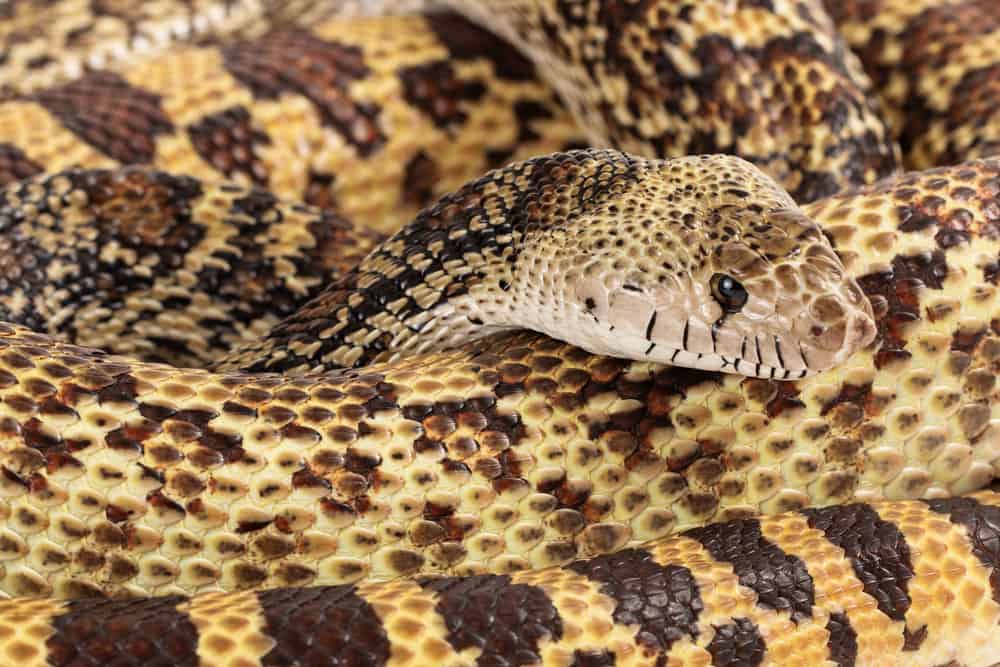
|
Scientific Name: |
Pituophis catenifer |
|---|---|
|
Range: |
Throughout California |
|
Adult Size: |
Up to 5.75 feet |
|
Description: |
Round pupils Robust snakes with long, slightly flattened heads Light brown with darker brown markings (chevrons or triangles, usually |
|
Habitat: |
Habitat generalists |
|
Venomous/Non-Venomous: |
Non-venomous |
Garter Snakes
The Gartersnakes are widespread, with many regional differences. One such subspecies is the California red-sided garter snake, a localized variant of the California garter snake.
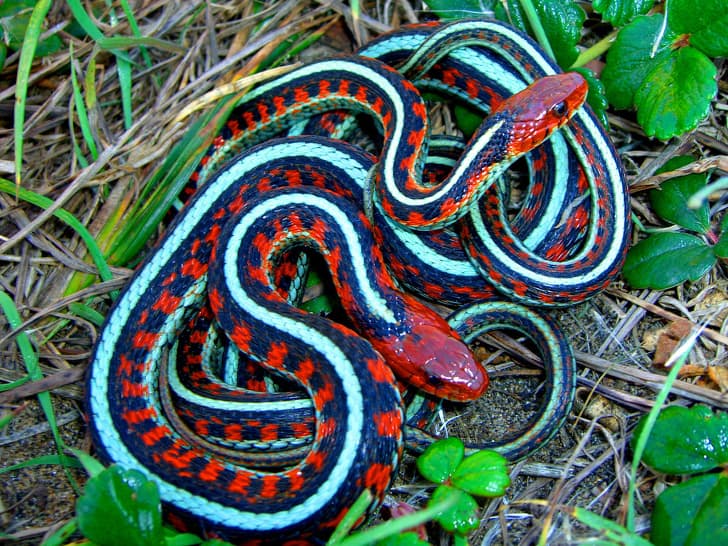
Posted by: u/brombinary (via reddit.com)
|
Scientific Name: |
Giant Gartersnake – Thamnophis gigas Sierra Gartersnake – Thamnophis couchii Aquatic Gartersnake – Thamnophis atratus Common Gartersnake – Thamnophis sirtalis Two-striped Gartersnake – Thamnophis hammondii Northwestern Gartersnake – Thamnophis ordinoides Western Terrestrial Gartersnake – Thamnophis elegans Marcy’s Checkered Gartersnake – Thamnophis marcianus |
|---|---|
|
Range: |
Throughout the state |
|
Adult Size: |
Up to 65 inches in length |
|
Description: |
Round pupils, and elongated heads Long brown snakes, relatively slender, with two to three light brown bands down the lengths of their bodies Some species may lack banding altogether |
|
Habitat: |
Habitat generalists, found in almost every habitat type |
|
Venomous/Non-Venomous: |
Non-venomous |
Venomous Snakes in California
California has a fair amount of venomous snakes, most of which are rattlesnakes. Below, we’ll take a closer look at some of the venomous species in the region.
Rattlesnakes and Sidewinders
Rattlesnakes get their name from their distinctive ‘rattle’ which consists of modified tail scales.
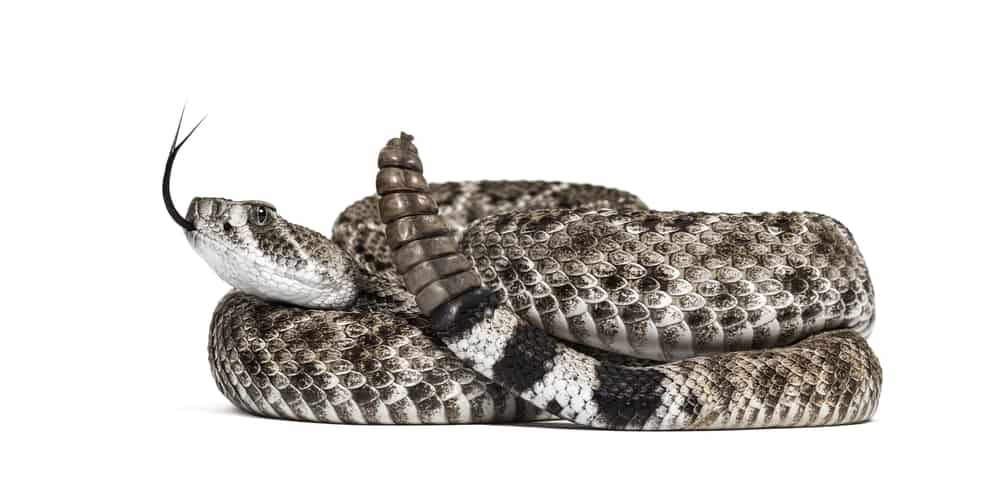
|
Scientific Name: |
Genus Crotalus Species:
|
|---|---|
|
Range: |
Throughout the state |
|
Adult Size: |
Variable, up to seven feet in the largest species (Western Diamond-backed) |
|
Description: |
Robust, thick-bodied snakes with broad, shield-shaped heads These snakes have distinctive rattles and slit-shaped pupils which set them apart from other species. |
|
Habitat: |
There’s a species for each habitat Sidewinders are sand-loving, but other rattlesnakes prefer prairies, marshes, or forests |
|
Venomous/Non-Venomous: |
Venomous |

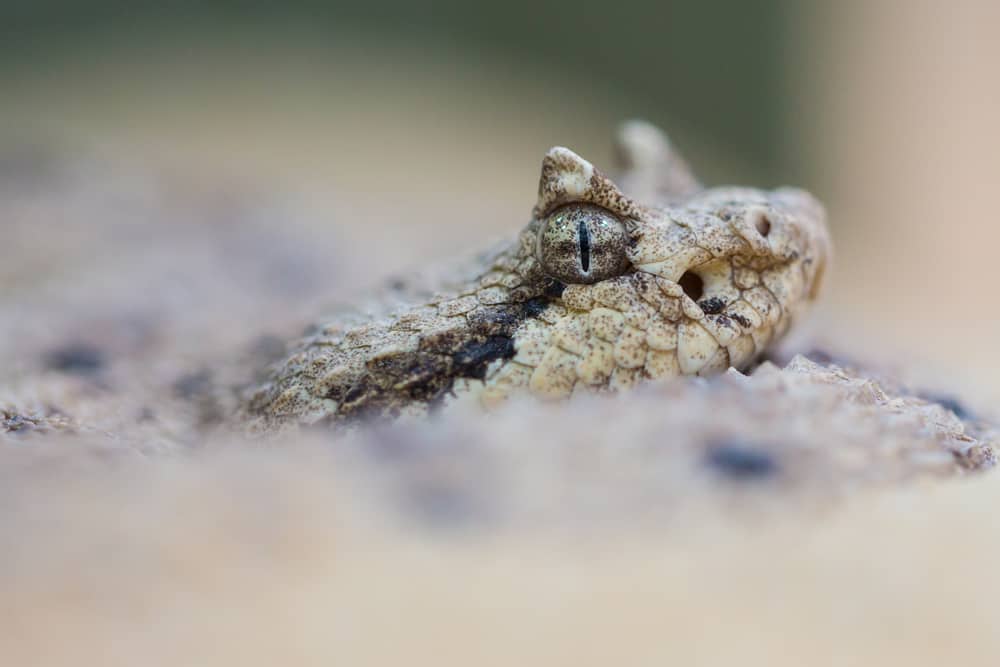
Lyresnakes
Lyresnakes get their name from the lyre-shaped marking on their heads.
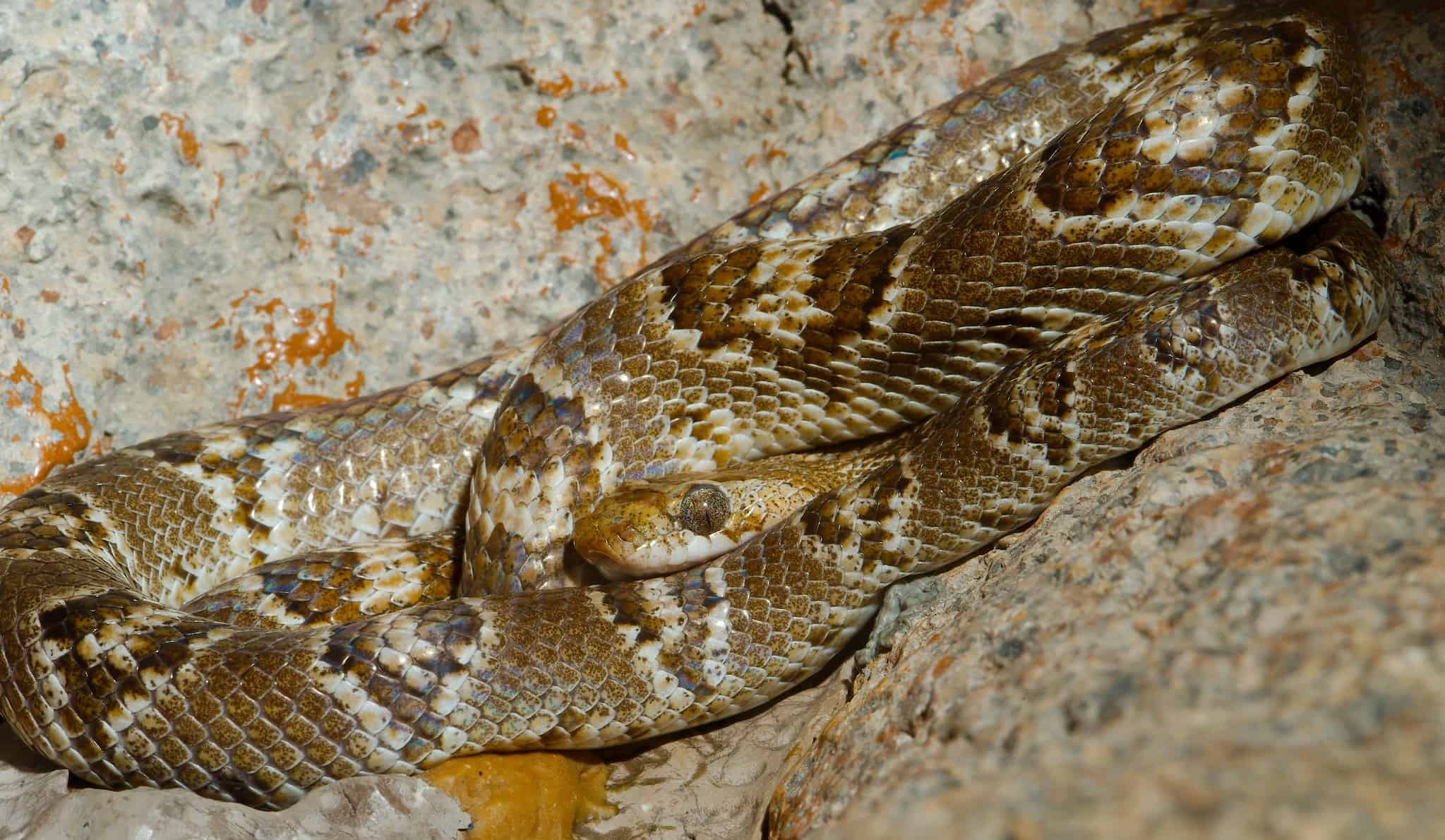
Image credit: guppiecat (via CreativeCommons.org)
|
Scientific Name: |
Genus Trimorphodon Species: Sonoran Lyresnake – Trimorphodon lambda California Lyresnake – Trimorphodon lyrophanes |
|---|---|
|
Range: |
Southern California, patchy distribution |
|
Adult Size: |
Up to 48 inches |
|
Description: |
Vertical pupils “Lyre-shaped” mark on the back of the head Long, slender snakes with blunt, elongated heads Brown with darker-brown chevron markings all over the body |
|
Habitat: |
Anywhere with sufficient vegetation for the snake to live in |
|
Venomous/Non-Venomous: |
Venomous |
Yellow-Bellied Seasnake
This black and yellow snake in California spends most of its life in the ocean, feeding on fish.
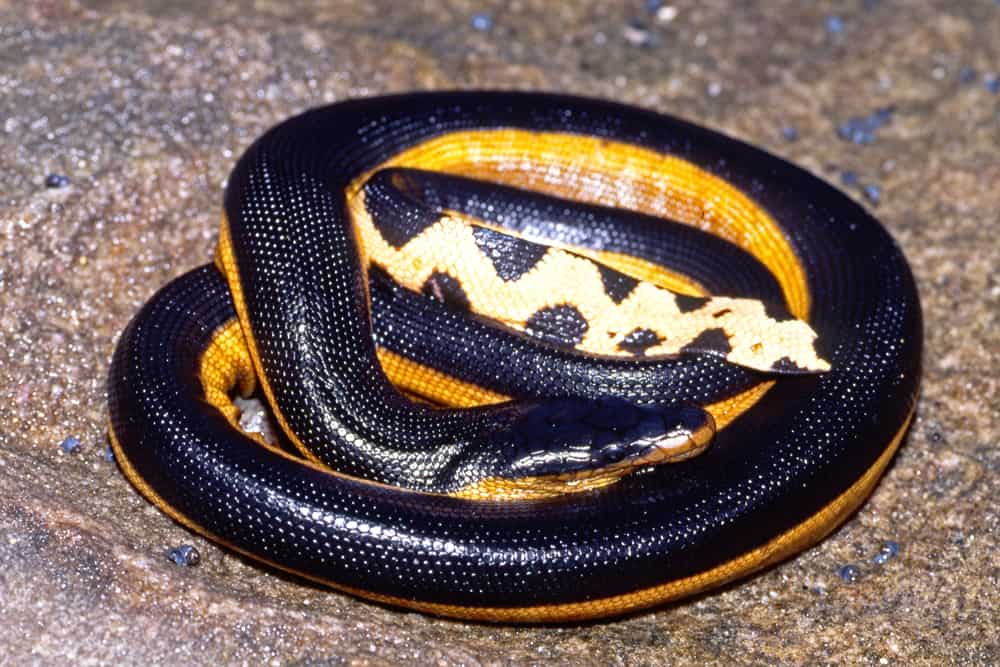
|
Scientific Name: |
Hydrophis platurus |
|---|---|
|
Range: |
Along the Coastline |
|
Adult Size: |
Up to 45 inches |
|
Description: |
Fin-shaped tail Yellow belly and black upperside Large head with a rounded snout |
|
Habitat: |
Pelagic currents on the coastline May be seen in seaweed and on beaches |
|
Venomous/Non-Venomous: |
Venomous |
Iconic Snakes in Southern California
If you were to construct a list of Southern California snakes that you simply have to see, what would be on it?
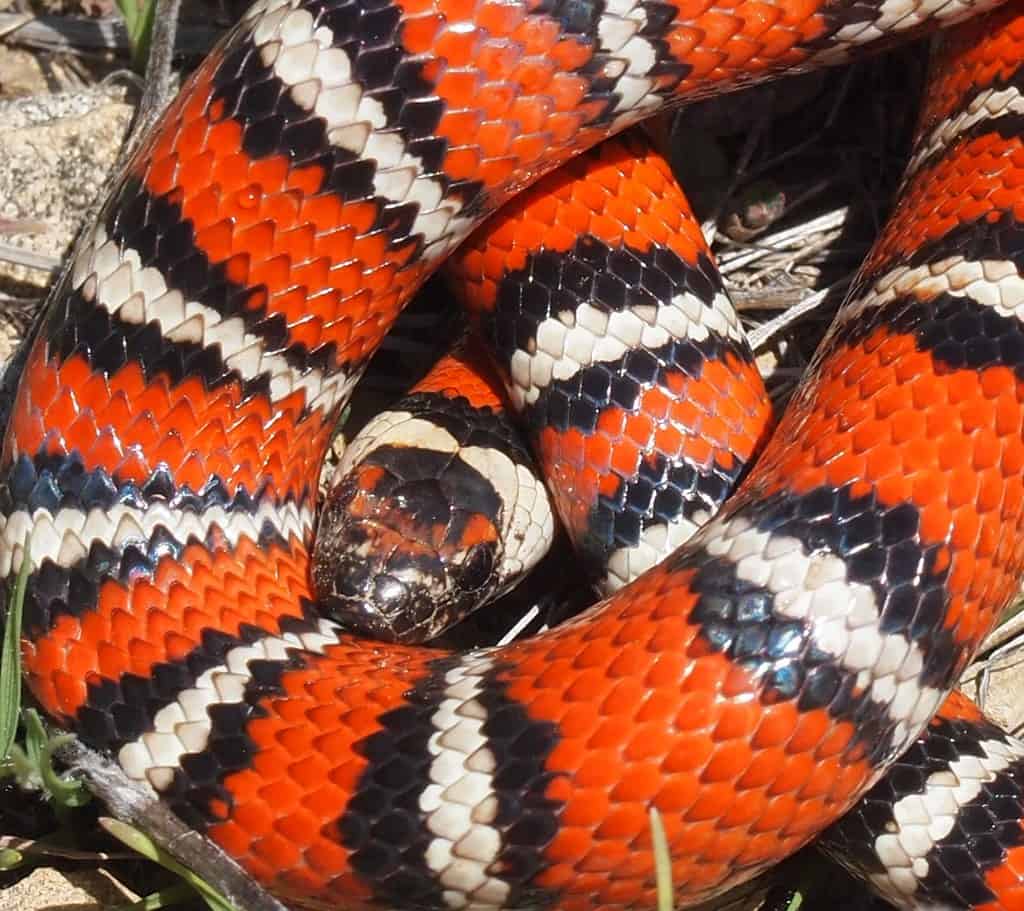
Image credit: J. Maughn (via CreativeCommons.org)
Here are a few of our favorite species from the area.
Nightsnakes
Nightsnakes are gorgeous animals with vibrant markings.
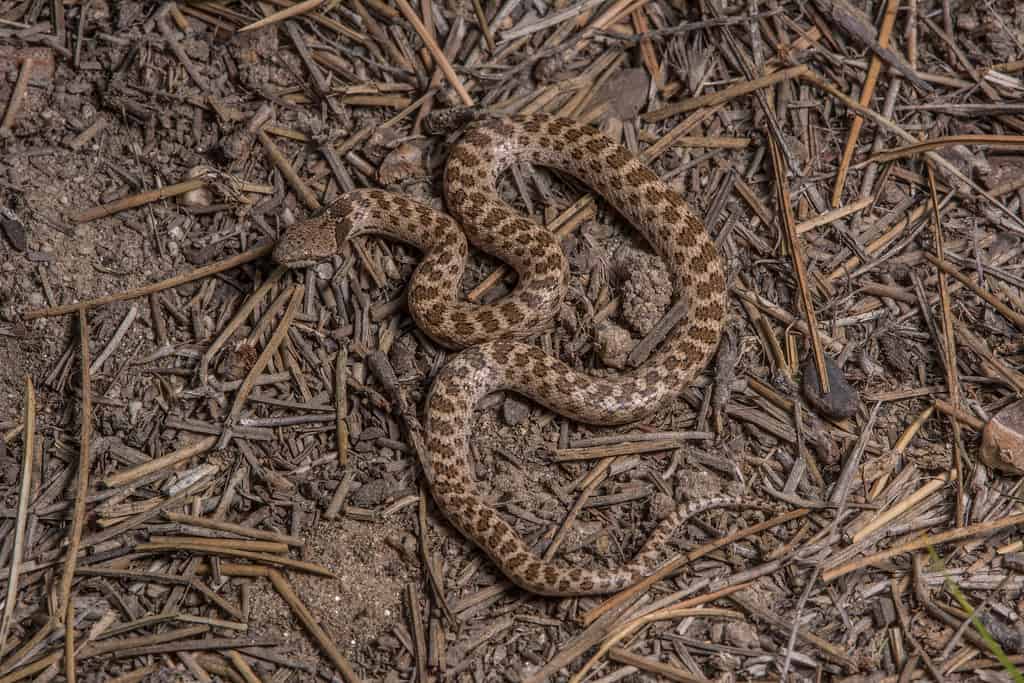
Image credit: amdubois01 (via CreativeCommons.org)
|
Scientific Name: |
Hypsiglena chlorophaea Hypsiglena ochrorhyncha |
|---|---|
|
Range: |
Most of California, sparse distribution in Central and Northern California |
|
Adult Size: |
Up to 26 inches long |
|
Description: |
Long, slender, brown snakes with dark brown spots Elongated heads with pointed round snouts and slit-shaped pupils |
|
Habitat: |
Rocky areas like grassland, woodland, thornscrub, and chaparral |
|
Venomous/Non-Venomous: |
Non-venomous |
Southwestern Threadsnake
Thread snakes are closely related to wormsnakes and have a similar appearance.
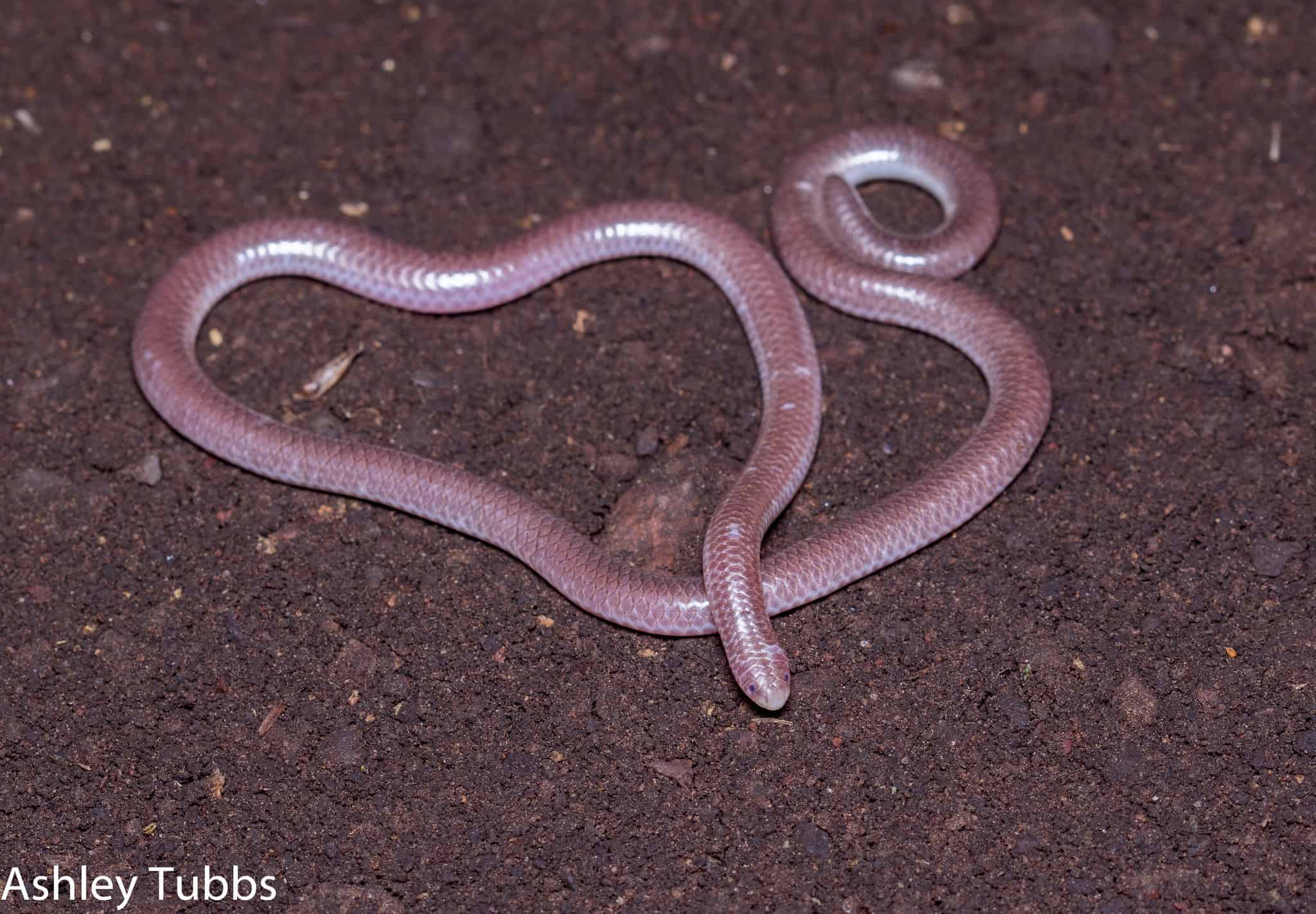
Image credit: ashleytisme (via CreativeCommons.org)
|
Scientific Name: |
Rena humilis |
|---|---|
|
Range: |
South and East-Central California |
|
Adult Size: |
Up to 16 inches |
|
Description: |
A small, pink or brown snake that resembles an earthworm Tiny eyes and a rounded head and tail contribute to the earthworm-like appearance of this snake |
|
Habitat: |
Underground in soft soils May be found at depths of up to 65 feet |
|
Venomous/Non-Venomous: |
Non-venomous |
Introduced California Snake Species
The California snakes list includes several species that aren’t native to the region. The following introduced species have been recorded in the area:
- Florida Watersnake – Nerodia fasciata
- Brahminy Blindsnake – Indotyphlops braminus
- Common Watersnake – Nerodia sipedon
Below, we’ll take a brief look at these species. They have narrow distributions, so you’re unlikely to spot them unless you go looking.
The Watersnakes
The distribution of watersnakes doesn’t naturally extend towards California.
Scientists aren’t quite sure how the snakes arrived in California. However, they think that the snakes might have hitched a ride along with vehicles working in the area.
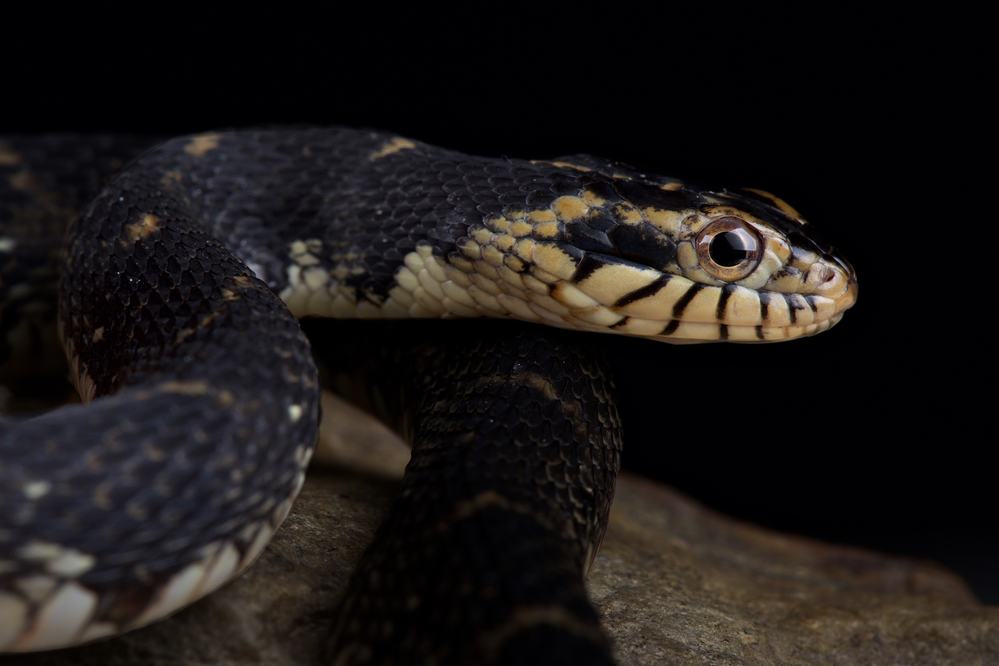
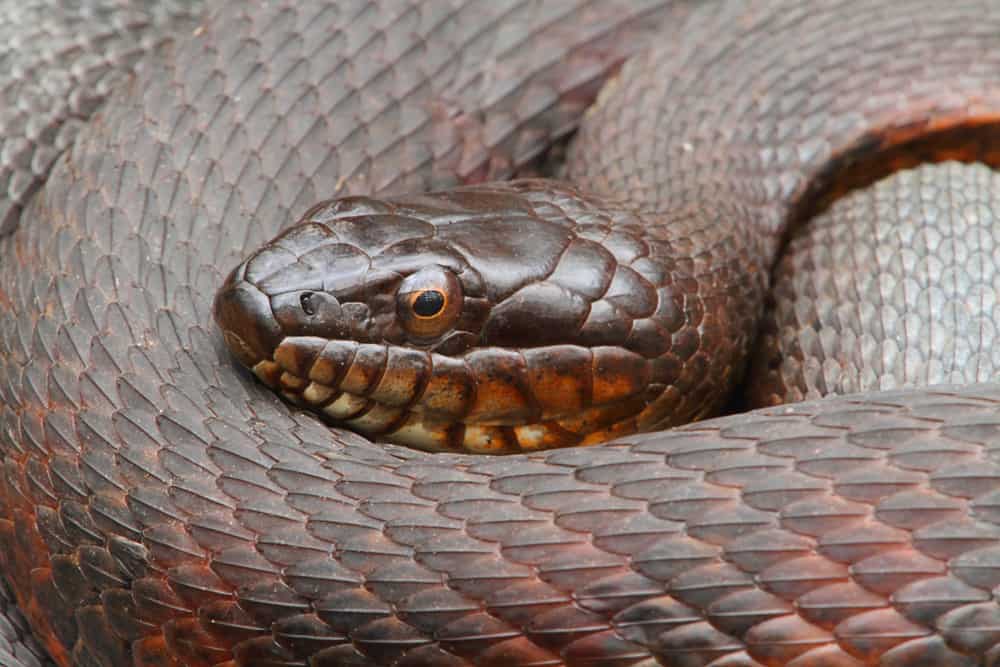
Brahminy Blind Snake
The Brahminy blind snake is a seasoned traveler that has established populations around the world.
As its name suggests, the species originates in India and has presumably traveled the world in shipments of plant exports.
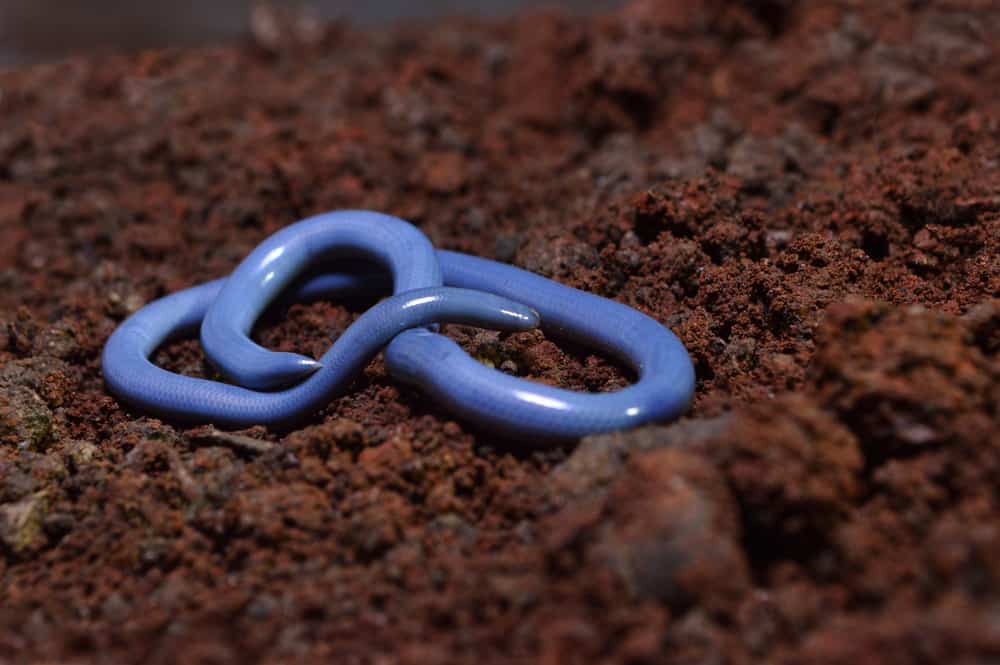
What You Need to Know
Whether you’re in Northern California, Southern California, or the Mexican desert, there are a few things you should know to help you stay safe:
- Snakes are as scared of humans as humans are of them.
- If you leave the snake alone, it won’t harm you (barring accidents).
- Always walk cautiously, and vigilantly, when entering a potential snake habitat.
There are several excellent reasons why we need snakes. These include:
- Snakes manage rodent populations and help to control diseases carried by ticks.
- These animals play an important role in the food web, as a prey item for larger animals.
- Snakes help to keep small animal populations at a size where the environment can support their numbers.
Snake Safety 101
When you’re trying to keep safe in snake territory, there are a few simple rules you can practice that will help protect you.
- Wear sturdy hiking shoes when you go on walks, and sturdy running shoes if you’re a jogger.
- Always stick to the prescribed trails and footpaths when running or walking in snake territory.
- Never poke, prod, tease, or otherwise interfere with a snake. If it can’t get away from you, it might strike.
- Keep your pets on leashes and your children close to you when you go on trips to parks and other ‘wild’ areas.
- Never enter densely vegetated and overgrown areas where you can’t see well. If you have to enter such an area, walk with a hiking cane and check each step carefully.
- Avoid letting pets and children play unsupervised anywhere within the natural distribution of a venomous species. Snakes often come close to homes because people attract rodents.
About Venomous Snakes
In many parts of the world, venomous snake species flee humans and aren’t much of a danger.
However, most of the dangerous snakes found in California and other parts of the US are pit vipers. This means that they rely on camouflage, rather than flight, to keep them safe.
The danger behind this kind of behavior is that you’re more likely to step on the snake. It’s essential to keep your eyes peeled when you’re out walking in California.
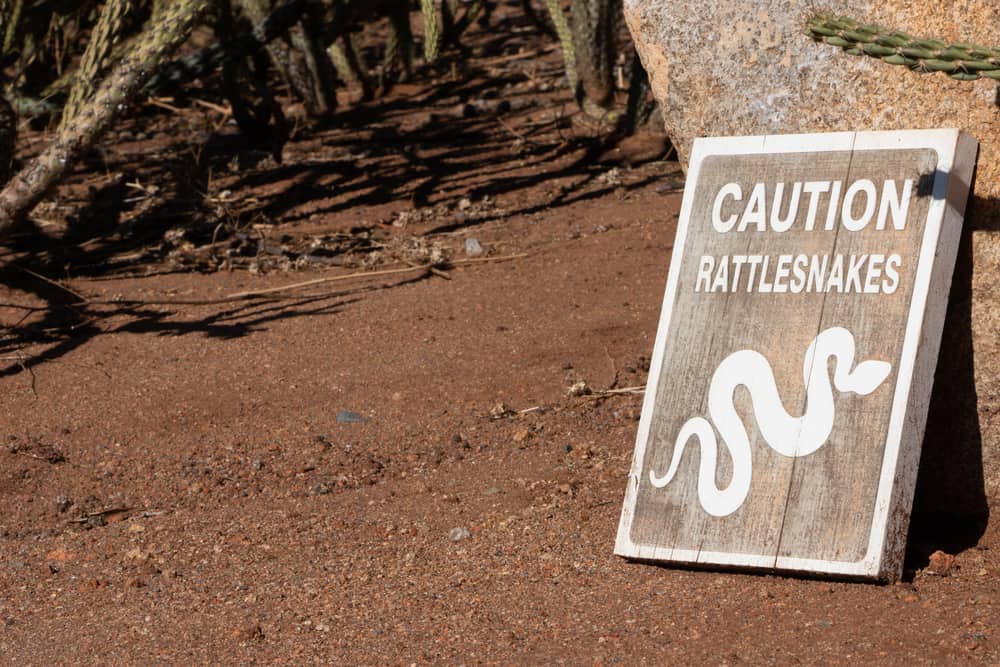
If You Encounter a Snake
In most cases, when you encounter a snake you won’t need to do anything. Simply back away from any snake you find and observe it from a safe distance.
Feel free to take photos of the snake, and try to make observations that will help you identify it.
NEVER try to pick up a snake, or otherwise bother it in any way.
When to Call for Help
There are typically only two situations that lead to your needing to call in reinforcements:
- If a snake bites you, someone else, or a pet, call the appropriate medical services.
- If a snake is in danger of getting hurt, hurt already, or in a location where it might hurt someone. In this case, call a wildlife officer.
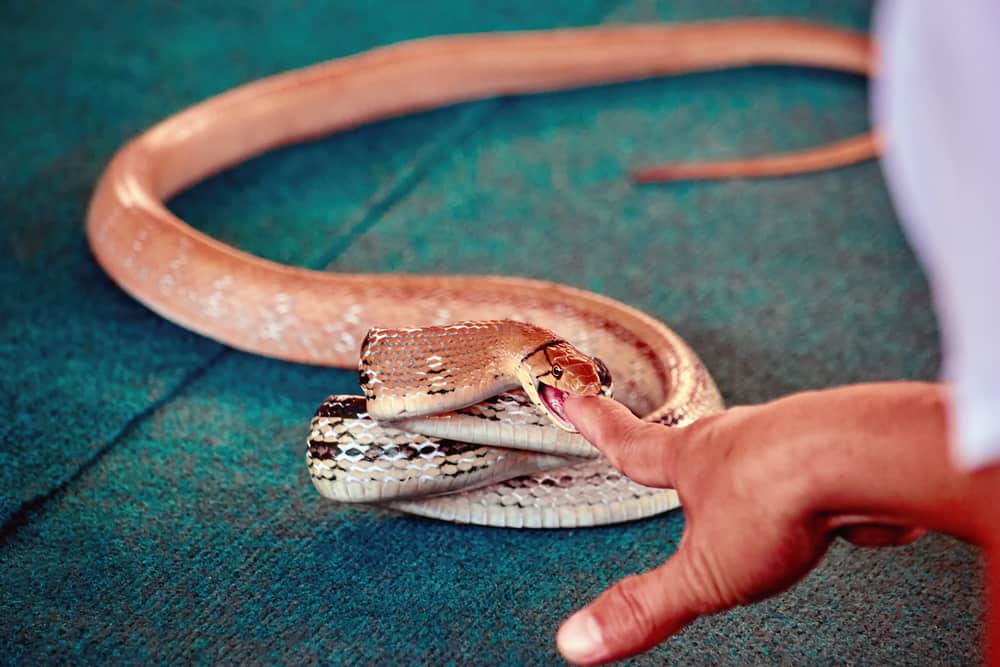
Useful Resources
I’ve compiled some useful resources for dealing with snakes. From snake removal to medical emergencies, I’ve got you covered.
Emergency Poisoning Advice
- Poison Control Center’s national hotline: 1-800-222-1222
- ASPCA Poisoning Hotline: 1-888-426-4435
Snake Relocation Services
Free Snake Relocation Directory on Facebook
The Human Wildlife Conflicts Program helps people to manage their relationships with wildlife, including snakes.
Bear in mind that it’s illegal to relocate snakes in California. If you call in a snake, the animal will be destroyed.
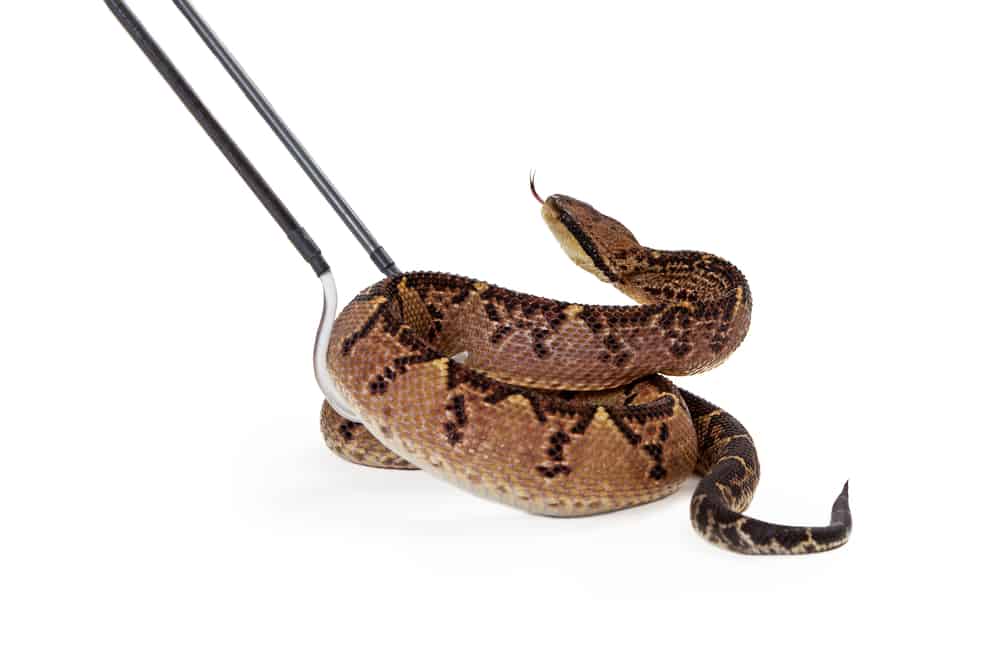
Educational Resources
- iNaturalist – on this site, species lists, range maps, and photographs help to identify snakes. You can also get input from other users.
- CaliforniaHerps – an excellent website with a guide to the amphibians and reptiles of California.
Related Articles to California Snakes Identification Guide
If you’re interested in other ID guides, have a look at our:
- Texas Snakes Identification Guide
- Florida Snakes Identification Guide
- California Lizards Identification Guide
You can also check out our other articles on snakes – we have vital guides that you can learn from!
